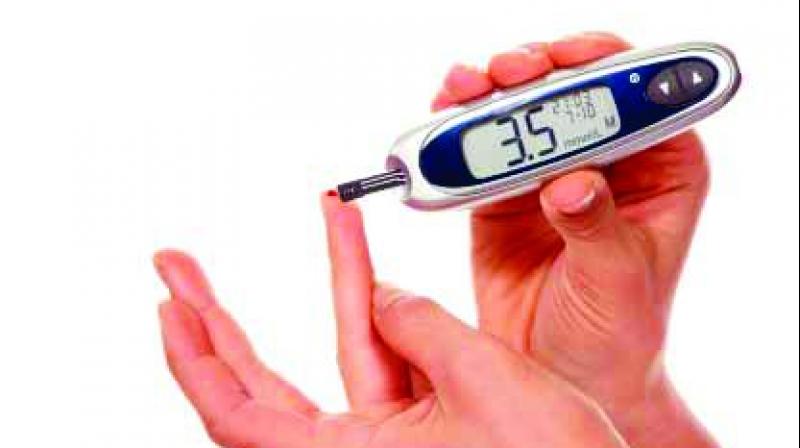Inflammation damages retina of diabetics: Study
Diabetic retinopathy has been classified into two types. Non-proliferative diabetic retinopathy and proliferative diabetic retinopathy.

Visakhapatnam: A growing body of evidence supports the prime role of inflammation and ‘angiogenesis’ in inducing progressive damage to the retina in diabetes patients, leading to diabetic retinopathy (DR).
Now, the findings of a recent study, carried out by the researchers at Andhra University College of Pharmaceutical Sciences and LV Prasad Eye Institute, Visakhapatnam, concurred with the same.
The study revealed higher levels of circulating inflammatory cytokines and vascular endothelial growth factor (VEGF) in patients with DR compared to the patients without the ocular condition. Cytokines are regulators of host responses to infection, immune responses, inflammation, and trauma. The pro-inflammatory cytokines act to make a medical condition worse.
On the other hand, the vascular endothelial growth factor is a major regulator of new blood vessel growth and an important inducer of vascular permeability, playing a role in diabetic retinopathy. Vascular permeability characterises the capacity of a blood vessel wall to allow for the flow of small molecules.
Speaking to DC, M. Nalini, a researcher from the AU College of Pharmaceutical Sciences, informed that they pooled a mix of 200 people with retinopathy and without retinopathy, for the study.
According to the ophthalmologists, the chances of contracting diabetic retinopathy depend on various factors, including the duration of diabetes, fluctuations in the blood glucose levels and how the sugar levels are controlled. In diabetic retinopathy, the retinal blood vessels are subject to progressive damage, subsequently leading to blurred or cloudy vision. If left untreated, the condition can cause permanent blindness in a patient.
“Dr P. Avinash from LV Prasad Eye Institute, Vishakhapatnam, guided us through to handpicking the patients with requisite medical conditions for the study and carrying out the medical tests. What drove us to pick the theme is that diabetes is fast gaining the status of a potential epidemic in India. And diabetic retinopathy is the most common sight-threatening complication of diabetes, caused by high blood sugar levels damaging the back of the eye (retina). Serum inflammatory cytokines and vascular growth factor were studied in different stages of diabetic retinopathy,” Ms. Nalini said. The other researchers of the study include BV Raghavulu, Dr. A. Annapurna, V. Chandi, N. Swathi N and Wasim from the AU College of Pharmaceutical Sciences and Dr. P. Avinash from the LV Prasad Eye Institute, Vishakhapatnam.
According to the ophthalmologists, the chances of contracting diabetic retinopathy depend on various factors, including the duration of diabetes, fluctuations in the blood glucose levels and how the sugar levels are controlled. In diabetic retinopathy, the retinal blood vessels are subject to progressive damage, subsequently leading to blurred or cloudy vision. If left untreated, the condition can cause permanent blindness in a patient.
Diabetic retinopathy has been classified into two types. Non-proliferative diabetic retinopathy (NPDR) is the early stages of the disease and proliferative diabetic retinopathy (PDR) is the more advanced form of the disease. The treatment of the DR depends on the severity of the disease, from just monitoring, laser treatment and other surgical modalities.

